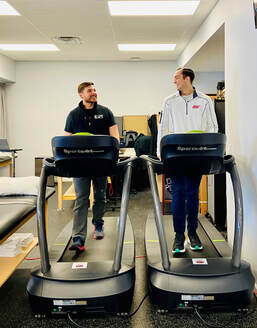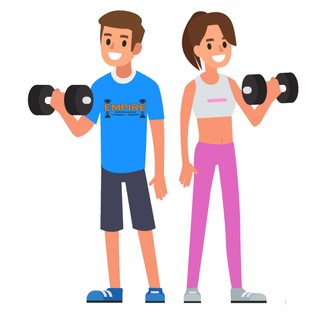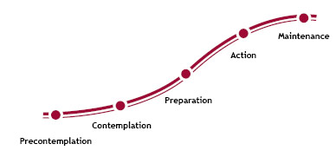|
It’s starting to get warmer outside which means spring sports are on the horizon. With the coming of spring sports we see a lot of patients come into the clinic with pain / injuries associated with the change from winter sports to spring sports.
This week we received a great question that is featured in this weeks blog from Mary B. “Hey Tony I have two kids that play basketball in the winter and are transitioning to softball and lacrosse this spring, what are some things that I should consider.” We broke this down into 5 things to consider....
0 Comments
Why working out with a partner is beneficial:
By: Dr. Elizabeth Bynum, PT, DBT  Frequently we attempt to make behavioral changes such as exercising more or eating healthier in an effort to improve our quality of life. Most individuals that attempt to do this are able to maintain the desired change for a few months. But, unfortunately, studies have shown that most people attempting to change their lifestyle fall short of maintaining the behavior change. This is primarily due to the fact that they have not set up the appropriate steps it takes to maintain a behavior change. In fact, research suggests that if you can maintain a behavior for 6 months or longer, the risk of relapsing into your old habits decreases substantially! So what does this mean for you? In order to adopt a healthier lifestyle and improve your chances of maintaining the lifestyle, you have to: 1) Surround yourself with people who support you and participate in the same activities that endorse your newly desired lifestyle. 2) Once you have hit your long term goal of a desired change, create a new long term goal to focus on. Then make more short term goals to measure your small successes along the way! 3) Self-efficacy, self-efficacy, Self-efficacy! Improving your self confidence and believing that you are capable of continuing a healthier lifestyle is extremely important and associated with a high predictability that you will continue to succeed in meeting your goals. Remember, you are stronger than you think! 4) Ensure you feel good and continue to feel good from the newly adopted change. Continuing to see impacts and positive changes will only improve your desire to continue the behavior. Make sure the benefits of your change truly outweigh the “good” feeling you got from your previous behavior. When faced with temptation, remind yourself of these heavily weighted benefits from your new habit and stick to it! 5) Continue to work on the behavior change until you no longer feel any temptation to fall back to your old habits. If you find that you no longer desire something that you couldn’t go without before, then you can be confident that your chances of relapse are extremely small. Below is a picture of a model that experts use to help guide you through a desired behavior change and the maintenance of that behavior. Remember that if you are reading this you have achieved, or, are working to achieve a goal. Determine what stage you are in, make a plan, incorporate the five steps mentioned above, and you’ll be on your way to maintaining a behavior and terminating any threats to fall back into your old ways! Pre-contemplation Phase: People in this phase are unaware of the need to change and currently have no intentions on doing so.
Contemplation Phase: People in this phase are aware of a need to change and are considering the pros and cons of moving forward with a given behavior change. Preparation Phase: In this stage, people are getting ready to make a change within ~30 days. They realize that a behavior change will positively impact their quality of life. Action Phase: People in this stage are currently participating in a desired behavior change and have been working on this change within the past 6 months. Maintenance phase: People in this stage have been adhering to a behavior change for 6 months or greater. They are working on maintaining the behavior and preventing relapse to previous stages. Best of luck and always remember that at Empire Performance PT, we are here to help you! Stop in and ask about our cash based program where we help you maintain an active lifestyle through 1 on 1 time with a doctor of physical therapy! By: Dr. Kyle Ioos, PT, DPT |
AuthorDr. Tony Tanzi: Physical Therapist, Triathlete, Runner, Performance Coach Archives
October 2022
Categories |





 RSS Feed
RSS Feed